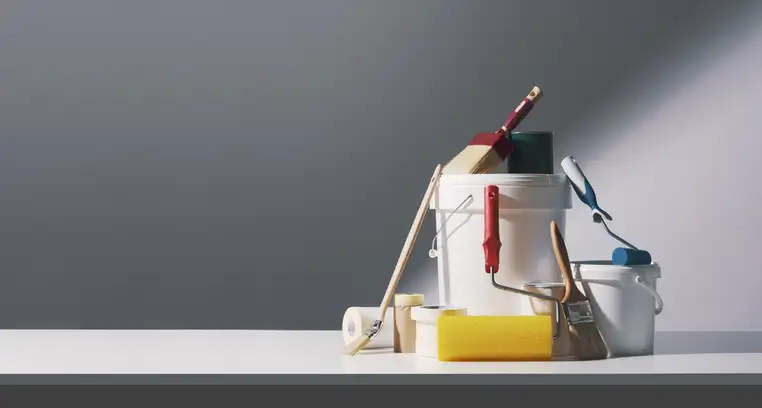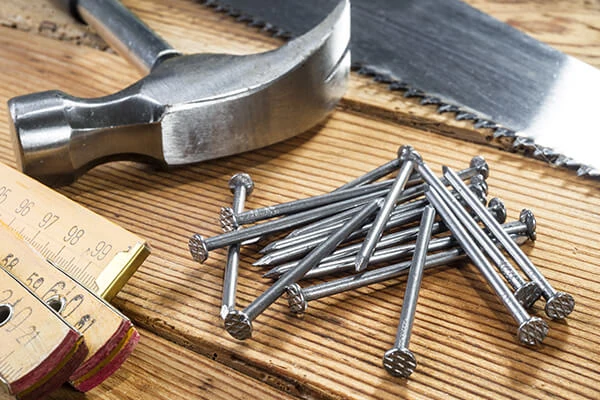Home Decorating Tips


Home Decorating Tips
Painting Tools for Beginners: Which Is the Best Option?
Posted on August 26, 2025
Last updated January 5, 2026
Whether you’re painting your living room walls, refreshing a piece of furniture, or giving your backyard a bold new look, the right tool can help make the job significantly easier. It can also help you achieve the even finish you’re aiming for. It’s about learning what works. Spend less time second-guessing and have more time enjoying the process!
While these painting tools might all seem interchangeable, it’s helpful to know which one works best for different surfaces and types of projects. Here’s a quick walkthrough of the most common painting tools. Find out what they’re good for, when to use them, and how to get the best results from each tool.
- Paint Rollers for Flat Surfaces
Rollers are a beginner’s dream. They’re fast, easy to use, and ideal for large, flat areas like walls and ceilings. If you want a smooth finish without spending all day with a tiny brush, a roller should be your must-have tool.
Rollers are easy to handle, which is perfect if you’ve never used a paintbrush before. They hold plenty of paint, cover large areas quickly, and help you work through a room without leaving streaks.
How to Get It Right
Use a paint tray and roll off excess paint before hitting the wall.- Apply the paint in a “W” or “M” shape, then fill in the gaps. This helps distribute paint evenly.
- Avoid pressing too hard or going over the same spot too many times. That’s how roller marks happen.
- For textured walls, go with a thicker roller cover. For smooth walls, a thinner cover does the trick.
- Paint Brushes for Control
For finer details, brushes are unmatched. Their design allows you to control every stroke, making it easier to paint small, intricate areas without worrying about paint spreading where it shouldn’t. They are best used for trim, edges, small furniture, touch-ups, and cutting in corners.
There’s a brush for almost every paint job. Angled brushes can be used for moldings and woodwork. Flat brushes are good for general use, and smaller ones are ideal for small furniture, corners, and nooks (tucked-away spaces). The key is not to overload the brush with paint and to use long, steady strokes.
How to Get It Right?- Dip just the tip of the brush (about one-third of the way) into the paint.
- Tap off excess paint instead of wiping it along the rim. Tapping off helps avoid drips.
- Brush with long, even strokes, and avoid “scrubbing” the surface.
- Always follow the grain on wood surfaces.
- Paint Sprayers for High-Speed.
Using a paint sprayer can help deliver a factory-smooth finish that’s hard to match with a brush or roller. However, sprayers come with one major trade-off: preparation time. You’ll need to carefully cover or mask off anything you don’t want painted. Overspray is real, and it can travel farther than you might expect. With the right setup and a bit of patience, a sprayer can make even big jobs feel manageable and give you flawless results.
How to Get It Right?- Mask off all nearby surfaces thoroughly.
- Test your sprayer on cardboard before pointing it at your project.
- Keep the sprayer moving in smooth, steady strokes at a consistent distance.
- Don’t stay in one spot or you’ll get drips.
When to Skip the Roller?
When you’re working in tight spaces, around corners, or on surfaces with lots of grooves, trim, or detailed features, a roller won’t be able to reach or provide the precision you need. In these cases, it’s better to put down the roller and switch to a paintbrush.
When to Skip the Brush?
You’ll want to skip the brush when you’re painting large, flat areas like walls, ceilings, or big pieces of furniture. In these cases, using a brush can be time-consuming and may leave visible stroke marks. A roller or sprayer is often a better choice for fast, even coverage across broad surfaces. Save the brush for the finishing touches, corners, and those little areas where precision matters most.
When to Skip the Sprayer?
If you’re working indoors in a tight space, or accent trims, furniture with intricate features, or anything that requires precision, a sprayer may cause more hassle than it’s worth. You’ll spend more time setting up, masking off areas, and cleaning the equipment than actually painting. Sprayers are also best avoided when you’re trying to minimize mess. In those cases, a roller and paint brush are more efficient options.
Which Tool Should You Actually Use?
The answer? Although tips were provided earlier, it still comes down to your personal preference and the type of project you’re doing. But if you’re still unsure where to begin, here’s a quick cheat sheet to help you choose the right painting tool:
- Use a roller when you’re painting big, flat surfaces like walls and ceilings.
- Use a brush when you’re painting corners, trim, or detailed furniture.
- Use a sprayer when you’re painting something large or outdoors.
Painting doesn’t have to feel like a chore. With the right tool in hand, you can achieve great results without the stress or the mess. So, grab your brush, roller, or sprayer, prep your space, and dive in. The only real mistake is not giving it a try.
For painting tools, tips, and a variety of DIY paint ideas, visit the Island Premium Paints website and get inspired for your next project.
References:
https://www.anniesloan.com/techniques/how-to-paint-a-wall-brush-vs-roller/
https://www.thespruce.com/how-to-properly-use-a-paint-brush-1824840
Our Products
Our line of high quality paints and products will give your home or project the vibrancy it needs.
Explore Colors
Ready to explore colorful possibiliies today? View our popular paint colo combination palettes for great color schemes and room design ideas for interior and exteriors.



